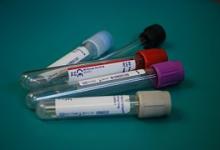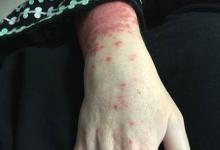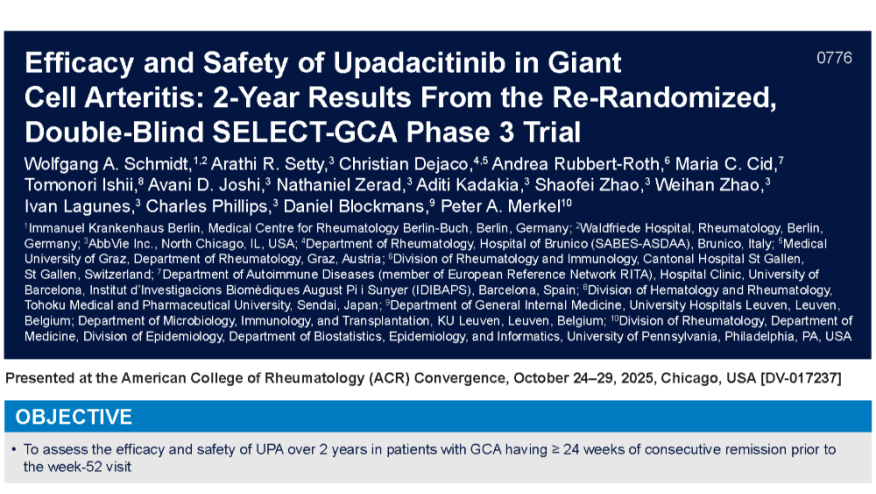Upadacitinib: revisiting safety data in RA and GCA Save

For the last several years, conversations about JAK inhibitors have often started and ended with safety. The shadow cast by ORAL Surveillance has made clinicians more cautious and regulators more restrictive. Yet in practice, many of us continue to reach for upadacitinib when we face challenges in treatment, from rheumatoid arthritis to axial spondyloarthritis.
Two abstracts at ACR this year help refine the risk-benefit discussion: seven-year follow-up data from SELECT-COMPARE in rheumatoid arthritis (Abstract 1676), and two-year results from SELECT-GCA in giant cell arteritis (Abstract 0776).
The SELECT-COMPARE analysis provides one of the most mature safety datasets we now have for any JAK inhibitor. More than 1600 patients with rheumatoid arthritis began the trial, randomised to upadacitib, adalimumab or placebo. At seven years, over 800 remained on therapy with upadacitinib or adalimumab. Over the seven years, the profile of upadacitinib remained stable. Overall adverse events, and specifically major adverse cardiovascular events, venous thromboembolism and malignancy (excluding non-melanoma skin cancer), were observed at similar rates to adalimumab. The familiar adverse events associated with JAK inhbiitors persisted: higher rates of herpes zoster, increases in creatine kinase, more nonmelanoma skin cancer and laboratory cytopenias. However, crucially, there were no new late-emerging signals.
Efficacy over the follow-up period remained adequate. Both continuous upadacitinib and continuous adalimumab maintained low disease activity thresholds in most patients, over 88% by week 372. Among those who needed to switch therapy due to insufficient initial response, outcomes tended to favour those who moved from adalimumab to upadacitinib rather than the reverse. This resonates with everyday clinical experience, in that, when TNF inhibition is no longer efficacious, a JAK inhibitor often provides adequate response.
The story becomes even more interesting when we look at giant cell arteritis. SELECT-GCA enrolled patients with a mean age of 71, the group we worry about most when prescribing a JAK inhibitor. After a year of treatment, patients who had achieved sustained remission were re-randomised for year two. Those who continued upadacitinib 15mg were far more likely to remain in remission, experienced fewer flares and required substantially less glucocorticoids than those switched to placebo.
Safety in this older vasculitis population was again reassuring. There were no major cardiovascular events across treatment groups in the second year, and only one venous thromboembolism, in a patient with multiple pre-existing risk factors. Herpes zoster remained more common with upadacitinib, a reminder that vaccination is a necessity.
None of this means we simply forget the lessons of the past three years. Cardiovascular and VTE risk stratification remain important. Certain groups, such as smokers with multiple risk factors, are still not ideal JAK candidates. However, these data show that in individuals who truly need an effective option, whether a younger patient with aggressive rheumatoid arthritis who has failed their first biologic, or an older person with GCA at risk of long-term glucocorticoid exposure, upadacitinib can be used responsibly with predictable safety and durable benefit.
Clinicians have often found themselves caught between regulatory messaging and real-world necessity. However, these two studies demonstrate that when used with careful consideration, upadacitinib need not be a therapy defined by warnings, but one defined by response in the appropriate populations.











If you are a health practitioner, you may Login/Register to comment.
Due to the nature of these comment forums, only health practitioners are allowed to comment at this time.